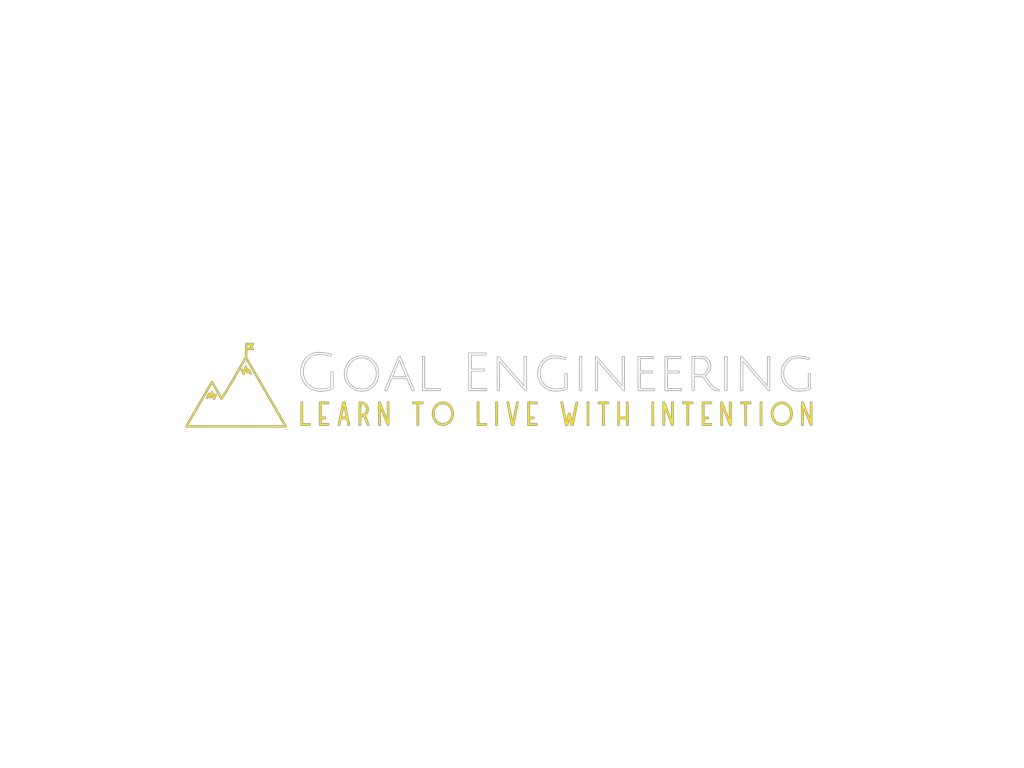Each December you get excited about the new opportunity to start fresh with a new year just around the corner. You’d like to get those ambitions written down into a plan but aren’t really sure how to set yearly goals.
To set yearly goals, begin by reflecting on your past year. Determine whether you need to continue, update, or stop any of your previous goals or start new ones. If you didn’t have any goals, consider your biggest life ambitions and write them down. Identify what you need to do each quarter in the coming year to meet your year-end objective. Then, set weekly milestones and daily action steps to get there.
Let’s dive deeper into what this means and how to do each of these steps, starting with some word math!
Word Math: What Are Yearly Goals?
Here are our definitions, courtesy of Google as always:
Set: decide on
Yearly: happening or produced once a year or every year
Goals: the object of a person’s ambition or effort; an aim or desired result.
To begin, we have this:
Set Yearly Goals
=
Decide on the aim, desired result, or object of your ambition or effort happening once a year.
Now simplifying for greater understanding, we get:
How do I do the once a year planning for the biggest desired results of my ambition or efforts?
In even plainer terms, yearly goals are the big ambitions which you establish once a year, or that will be accomplished or finished once a year.
When you set yearly goals, you determine what you want to do with the next year of your life. It’s a form of planning that makes every action you do, even daily and weekly, have intention.
Now that we’ve got a better idea of what they are, let’s see how to set them!
Begin to Set Yearly Goals by Looking at the Past Year
December is to a year what Sunday is to a week. It’s a time to rest, recover, focus on what’s most important, and most of all, plan and prepare! This means accounting for the past year and using that data to prepare for the year ahead.
I always begin this with a few weeks of reflection, usually throughout December.
I consider each goal-planning session to be just a different version of all the others, as follows:
- Weekly planning is like a more lengthy version of daily planning.
- Quarterly planning is similar to weekly planning but just longer.
- Yearly planning, then, is just like quarterly but much deeper.
For each level of planning, I ask myself different questions depending on where I’m at. Everything I analyze comes down to two main points:
- How did I do?
- What does that indicate I should do in the future?
The reality is, without the social construct of a calendar, yearly planning is somewhat arbitrary. It’s never a singular event but rather a continuation of your goals from the past year.
So if you want to set really efficient yearly goals, reflect on the past. Ask yourself some of the following questions to do that:
- What went well this year?
- How can I do better?
- What did I do that I enjoyed?
- Where there any goals did I not like doing? Why?
- Are there any goals that I need to continue working on?
Remember that it’s unlikely that you’ll accomplish your biggest ambitions in just one year. Running a marathon took me about 18 months, for example. So it’s okay if you want to keep going after a big goal you’re not done with.
Now that you know how to gather data from looking back, it’s time to turn your mind to the future.
Finish Setting Yearly Goals by Looking Ahead
In the first step, you looked back at the past year to gather information. From that, it’s likely that you already have some great ideas.
Your existing goals will be the basis for what you’ll do next year. But you need some guidance on what the next steps should be. In Measure What Matters, author John Doerr outlines what Google uses to help employees determine how they might need to modify their goals.
I include a modified version of these in my own goal-setting and tracking spreadsheet:
- Continue your goal if you are on track to succeed but aren’t finished yet. This might be the hardest choice to make when you’re trying to set yearly goals but is also most likely the best move forward. Usually, at the end of a year, you’re just not done with what you set out to do the previous year. You just need to recommit yourself and that’s okay!
- Update your goal to meet new realities if external conditions have made your results unobtainable. COVID-19 is the perfect example here. There’s no need to be hard on yourself for something that’s out of your control, so pick yourself up, update your goal, and just keep going!
- Start a new goal if you feel like you’ve completed your previous goals or built your desired habits successfully. Usually, we want to do this at the beginning of each new year. It’s most often wiser to continue working on things we’re not done with. But there are times when you do finish a goal right a the end of the year and this will apply.
- Stop your goal if you’ve determined that it’s not worth it to continue. This might happen if it’s not going as planned or if you find something better to work on.
What If You’re Starting Fresh With No Previous Goals?
But what should you do if you looked back at the past year and noticed you hadn’t set any goals? Or that you did and gave up in February? In this case, reflecting on your past will still help.
Instead of looking at only the past year, however, you’ll just need to consider your lifelong ambitions. You might do this as part of your yearly goal-setting journey anyway to determine if you need to continue, update, start, or stop any of your goals.
What have you always wanted to do but never got around to? Is it starting a business? Running a marathon? Or maybe getting a new job?
The worst thing you can do at this point is identifying too many aspirations you want to work on. It’s great to start with a big list and narrow it down, but you should only have 4-8 goals and that’s it.
And if you’re just beginning with goal-setting again after many years of failure, stick with only four and no more.
Why You Need to Limit the Number of Yearly Goals You Set
One of the most common problems I see when people set yearly goals is setting too many. It always leads to overwhelm which causes failure.
Do you know how to boil a frog? If you put the pot of water on the stove, heat it up to boiling, then put the frog in, it will jump out.
Instead, you have to begin with normal temperature water and heat it slowly if you want the frog to stay in.
Your life is the same way. If you try to change too much all at once, you’re going to jump out of your plan after not very long. Gradually turning up the heat, however, ensures that you will stick to your biggest aspirations and see them through to completion.
To begin, just set one goal in each of these four categories:
- Faith, including religion or personal development.
- Family or friends.
- Financial, which can mean money, career, or learning.
- Fitness, consisting of diet, exercise, or rest.
I recommend starting with only one in each category for two reasons. One, it will keep you from setting too many goals. But the second is that it will help you prioritize only the most impactful goals.
There are certain goals you can set that will have a bigger difference than any other set of goals combined. When you can only set one goal in each category, it forces you to spend time considering what those are.
What is the one thing, that if you completed in each of these four categories, would have the biggest impact on the rest?
Right now, for example, I take my son hiking twice a week. This improves my relationships, productivity, and health.
Once you have your domino goal for each category, it’s time to break that down into action steps.
Turning Your Yearly Goals Into Quarterly, Weekly, and Daily Action Plans
Ask yourself these questions to narrow your big ambitions down into a plan:
- If I want to get this done by the end of the year, what will I need to have accomplished by the end of quarter 3? What about quarter 2? And quarter 1?
- With a plan for what you need to have done by the end of quarter 1, identify what weekly results, or lag indicators will contribute to that bigger outcome?
- What daily actions, or lead indicators, do you need to take to achieve those weekly results?
Set a plan to track these daily actions and weekly results and have daily, weekly, and quarterly planning sessions to reflect on your performance.
If you need a template, check out the Goal Engineering Starter Kit below for a free copy of the one I created. It helps me with all aspects of setting yearly goals, keeps me accountable, and even helps me change goals anytime I need to.
When to Set Yearly Goals
On February 13, 2019, I lost my full-time engineering job. The next few days and weeks were a whirlwind. But what ended up saving me was adding structure to my day again by resetting my yearly goals.
I could never have been fully prepared for losing my job. However, by knowing how to set yearly goals, I was able to get back on my feet not long after recovering emotionally.
Be prepared to set yearly goals at any time, even if it’s in the middle of the year. When big life events come up, don’t be afraid to reflect and re-evaluate.
Also, don’t be afraid to reset your own yearly goals if you need to. I do this mid-quarter sometimes and it’s helpful to let myself be flexible like this.
You might be afraid to commit to a yearly goal because you worry whether it’s right for you. Combat this by taking on the mindset of a scientist.
Your goal is just a hypothesis. You can commit to it, and if it doesn’t work out, that doesn’t mean you’re a failure. All you need to do is gather data by asking questions, identify a new hypothesis, or goal, and keep moving forward!
Conclusion: How Will This Pattern Keep You Motivated?
You have big ambitions. That’s a wonderful thing, but I’ll bet that the idea that the potential of failure scares you a little bit. You worry that you’ll be able to keep consistent when it gets difficult.
The biggest indicator of whether or not you’ll succeed at your yearly goals is whether or not you have a plan to accomplish them.
By identifying quarterly, weekly, and daily action steps and milestones, you break your massive goals down into pieces that are small enough for you to handle.
I’ve had many years of experience with solving math and engineering problems and with goal-setting and achievement. Every time I successfully solved a problem or accomplished a goal, the final solution only came after I broke it down and solved it one piece at a time.
When you follow these steps I’ve outlined, you do the same. This will keep you from getting overwhelmed because it makes you focus on just the next step in front of you, which boosts the chances that you’ll stay motivated and actually take it.
I’m confident that if you try this process yourself, you’ll soon discover a new ability to consistently stick to and achieving your goals!





